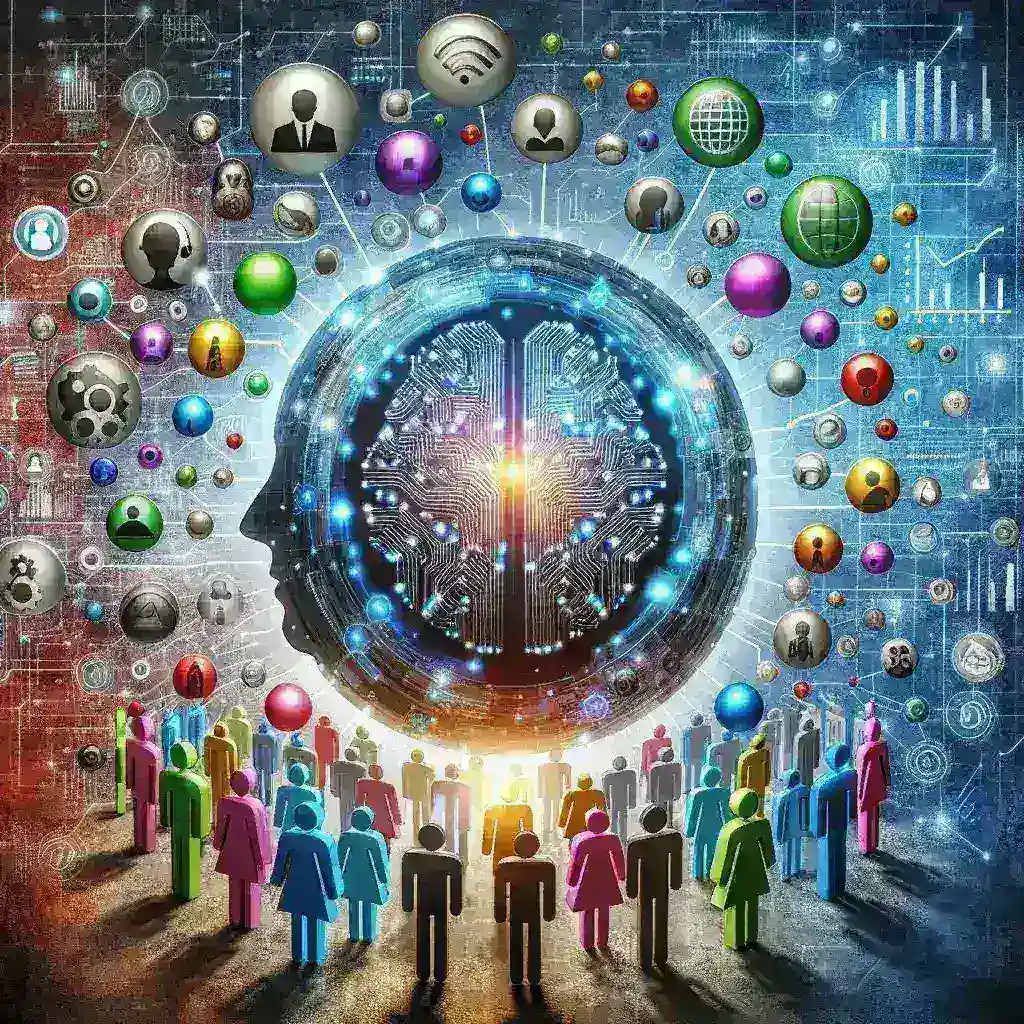The Evolution of Business Communication in a Global Marketplace
In today’s interconnected world, businesses are no longer confined by geographical boundaries. The global marketplace has opened doors to unprecedented opportunities, allowing companies of all sizes to expand their reach across continents. However, with these opportunities come significant challenges, particularly in the realm of communication. Language barriers have traditionally been one of the most formidable obstacles to effective global business operations, often leading to misunderstandings, delays, and lost opportunities.
As we venture deeper into the 21st century, artificial intelligence has emerged as a transformative force in addressing these communication challenges. AI-powered translation services represent a revolutionary advancement that is fundamentally changing how businesses communicate across linguistic divides. These sophisticated technologies are not merely replacing traditional translation methods; they are reshaping the entire landscape of global business communication.
The Traditional Challenges of Cross-Lingual Business Communication
Before delving into the transformative impact of AI-powered translation services, it’s worth examining the historical challenges businesses have faced when attempting to communicate across language barriers:
- Time delays: Traditional translation processes often required days or even weeks, creating significant bottlenecks in business operations.
- High costs: Professional human translation services typically command premium rates, particularly for specialized business content.
- Inconsistency: Different translators might interpret industry-specific terminology differently, leading to inconsistent messaging.
- Scalability limitations: As business communications increased in volume, traditional translation methods struggled to keep pace.
- Cultural nuances: Beyond literal translation, understanding cultural contexts and nuances presented additional layers of complexity.
These challenges often resulted in businesses either limiting their international expansion or operating at a disadvantage in global markets. Companies that could afford comprehensive translation services gained a significant competitive edge, while smaller enterprises frequently found themselves excluded from international opportunities altogether.
The AI Translation Revolution: Beyond Simple Word Replacement
The emergence of AI-powered translation services represents a paradigm shift in how businesses approach cross-lingual communication. Unlike early machine translation systems that performed simple word-for-word substitutions (often with comically inaccurate results), modern AI translation platforms leverage sophisticated neural networks and deep learning algorithms that understand context, idioms, and even industry-specific terminology.
This technological evolution has transformed translation from a purely linguistic exercise into a nuanced communication tool that preserves not just the words but the intent, tone, and cultural appropriateness of the original message. Modern AI translation systems continually learn and improve through exposure to vast datasets of human language, enabling them to recognize patterns, adapt to specialized vocabulary, and produce increasingly natural-sounding translations.
Key Technological Innovations Driving AI Translation Excellence
Several breakthrough technologies have contributed to the remarkable capabilities of today’s AI translation services:
- Neural Machine Translation (NMT): Unlike previous statistical approaches, NMT systems process entire sentences as complete units, maintaining contextual accuracy throughout.
- Transformer Models: These architectural innovations have dramatically improved translation quality by better capturing relationships between words regardless of their position in a sentence.
- Transfer Learning: Modern AI systems can apply knowledge gained from translating one language pair to improve performance on other language combinations.
- Contextual Understanding: Advanced algorithms now recognize when words have multiple potential meanings and select the appropriate translation based on surrounding context.
- Adaptive Learning: AI translation systems continuously improve by incorporating feedback from human reviewers and users.
These technological advancements have collectively elevated machine translation from a crude tool of last resort to a sophisticated business solution capable of handling nuanced communication needs across languages.
Transformative Business Applications of AI Translation Services
The impact of AI-powered translation services extends far beyond simple document translation. These technologies are being integrated into virtually every facet of global business operations, creating new possibilities for international collaboration and market expansion.
Real-Time Communication
Perhaps the most revolutionary application is in real-time communication scenarios. Advanced AI translation services now enable:
- Live video conference interpretation: Participants can speak their native languages while AI provides simultaneous translation, displayed as subtitles or delivered through audio.
- Instant messaging across languages: Team collaboration platforms can automatically translate messages, allowing multinational teams to communicate seamlessly.
- Voice-to-voice translation: Sophisticated systems can now capture spoken words, translate them, and deliver the translation in a synthesized voice that maintains the speaker’s tone and cadence.
These capabilities effectively eliminate the need for human interpreters in many business scenarios, dramatically reducing costs while increasing the speed and spontaneity of cross-lingual communication.
Content Localization at Scale
For businesses expanding into new markets, content localization has traditionally been a resource-intensive process. AI translation services are transforming this landscape by enabling:
- Automated website localization: Entire business websites can be translated and culturally adapted for multiple markets simultaneously.
- Marketing material customization: Promotional content can be quickly adapted for different linguistic markets while preserving brand messaging.
- Product documentation translation: Technical manuals and support documentation can be made available in dozens of languages without proportional increases in cost.
- Social media localization: Companies can maintain active, linguistically appropriate social media presences across multiple regions.
The scalability of AI translation allows businesses to maintain consistent messaging across all markets without the prohibitive costs previously associated with comprehensive localization strategies.
Customer Service Enhancement
The customer service domain has been particularly transformed by AI translation capabilities:
- Multilingual chatbots: AI-powered customer service bots can now engage with customers in their preferred languages, providing 24/7 support worldwide.
- Cross-lingual knowledge bases: Self-service support resources can be automatically maintained in multiple languages, ensuring all customers have equal access to information.
- Email response systems: Support teams can respond to customer inquiries in any language, with AI handling the translation in both directions.
- Call center augmentation: Voice-based AI translation can assist human agents in communicating with customers who speak different languages.
These applications significantly reduce the cost and complexity of providing high-quality customer support across global markets, allowing businesses to maintain consistent service standards regardless of language considerations.
Industry-Specific Applications and Success Stories
The transformative impact of AI translation services is particularly evident in certain industries where precise communication across languages is essential.
E-commerce and Retail
Global e-commerce platforms have been among the earliest and most enthusiastic adopters of AI translation technologies. These services enable:
- Automatic product description translation for international marketplaces
- Localized shopping experiences with culturally appropriate messaging
- Real-time customer service across multiple languages
- Seamless international return and exchange processes
A prominent international marketplace increased its cross-border sales by 35% after implementing AI-powered translation for product listings and customer service interactions. The ability to provide detailed, accurately translated product information significantly reduced return rates and increased customer satisfaction scores across non-English-speaking markets.
Manufacturing and Supply Chain
For manufacturing businesses with global supply chains, clear communication is essential for quality control, safety, and operational efficiency. AI translation services are being used for:
- Technical specification communication between international partners
- Safety protocol dissemination across multinational facilities
- Supplier relationship management across language barriers
- Quality assurance documentation in multiple languages
A leading automotive manufacturer implemented AI translation for its global supplier communication platform, resulting in a 28% reduction in production delays previously attributed to miscommunication. The system’s ability to accurately translate technical specifications and engineering requirements has significantly improved first-time quality rates across the supply chain.
Financial Services
The financial sector deals with complex concepts that require precise translation. AI-powered services are helping with:
- Regulatory compliance documentation across multiple jurisdictions
- Investment opportunity communications to international clients
- Cross-border transaction processing and support
- Financial education resources for diverse customer bases
A global investment firm reported that implementing AI translation for client communications increased their international client acquisition rate by 47%. The ability to provide timely, accurately translated investment analyses and recommendations has proven particularly valuable in rapidly changing market conditions.
Healthcare and Pharmaceuticals
Perhaps no industry demonstrates the critical importance of accurate translation more clearly than healthcare, where AI translation is supporting:
- Patient communication in multilingual environments
- International clinical trial coordination
- Medical research collaboration across linguistic boundaries
- Regulatory submission preparation for multiple markets
A multinational pharmaceutical company reduced its time-to-market for new medications in non-English-speaking countries by an average of 4.5 months after implementing AI translation for regulatory documentation. The system’s ability to maintain consistent terminology across all translated materials significantly streamlined the approval process in multiple jurisdictions.
The Competitive Advantages of AI Translation Adoption
Organizations that have successfully integrated AI-powered translation services into their global communication strategies have realized several distinct competitive advantages:
Accelerated Market Entry
The ability to rapidly translate and localize all necessary business materials—from marketing content to legal documentation—has dramatically reduced the time required to enter new markets. Companies can now launch simultaneously in multiple countries without the months of preparation previously required for translation and localization.
Cost Efficiency at Scale
While professional human translation remains expensive (typically $0.10-$0.30 per word for business content), AI translation services often operate on subscription models that allow unlimited translation volume. This pricing structure enables comprehensive communication strategies that would be financially prohibitive using traditional methods.
Enhanced Agility and Responsiveness
In fast-moving global markets, the ability to communicate quickly across language barriers provides a significant advantage. Companies using AI translation can respond to market developments, customer feedback, and competitive pressures in near real-time, regardless of linguistic considerations.
Expanded Talent Pools
Organizations leveraging AI translation can build truly global teams, recruiting the best talent regardless of language proficiency. This capability is particularly valuable for specialized roles where the global talent pool is already limited.
Improved Customer Relationships
By communicating with customers in their preferred languages, businesses demonstrate respect and cultural sensitivity that builds stronger relationships. The personalization made possible through AI translation contributes significantly to customer loyalty in international markets.
Implementation Strategies for Maximum Effectiveness
While AI translation technologies offer remarkable capabilities, their successful implementation requires thoughtful strategy and awareness of both strengths and limitations.
Selecting the Right AI Translation Solution
Not all AI translation platforms are created equal, and businesses should consider several factors when selecting a solution:
- Language pair coverage: Ensure the system supports all languages relevant to your business operations and target markets.
- Industry-specific capabilities: Some platforms offer specialized models trained on industry-specific terminology for fields like legal, medical, or technical content.
- Integration capabilities: The most effective implementations seamlessly integrate translation functions into existing business systems and workflows.
- Customization options: Look for platforms that allow terminology management and the creation of custom translation memories to maintain consistency.
- Security and compliance features: For sensitive business information, data handling practices and compliance certifications are critical considerations.
Human-in-the-Loop Approaches
Despite remarkable advancements, AI translation is most effective when combined with human oversight in certain scenarios:
- High-stakes communication: For legal contracts, major negotiations, or sensitive diplomatic exchanges, human review remains essential.
- Brand-critical content: Marketing materials that define brand voice and positioning benefit from human refinement after initial AI translation.
- Cultural adaptation: Human experts can ensure that translations are not just linguistically accurate but culturally appropriate and persuasive.
- Feedback loops: Human reviews can be fed back into AI systems to continuously improve translation quality for specific business contexts.
The most successful implementations typically establish clear guidelines for when AI translation alone is sufficient and when human review is warranted, balancing efficiency with risk management.
Organizational Change Management
Implementing AI translation effectively often requires organizational adjustments:
- Process redesign: Communication workflows may need reconfiguration to incorporate translation at appropriate stages.
- Training and awareness: Users need to understand both the capabilities and limitations of AI translation tools.
- Governance structures: Clear policies regarding translation quality standards and review requirements help maintain consistency.
- Metrics and monitoring: Establishing KPIs for translation effectiveness ensures continuous improvement.
Organizations that treat AI translation implementation as a strategic initiative rather than merely a technology deployment typically realize greater benefits.
Challenges and Considerations in AI Translation Adoption
While AI-powered translation services offer tremendous benefits, several challenges and considerations warrant attention:
Quality Variations Across Language Pairs
Not all language combinations are supported equally well by current AI systems. High-resource language pairs (like English-Spanish or English-French) typically benefit from more extensive training data and produce higher quality translations than less common combinations. Organizations operating in markets with less-represented languages may need to implement additional quality assurance measures.
Cultural Nuance and Localization
Pure translation addresses only part of the communication challenge across markets. Cultural adaptation—considering local customs, taboos, humor, and preferences—remains an area where human expertise adds significant value. The most sophisticated approaches combine AI translation with cultural consulting to ensure messages resonate appropriately in each target market.
Data Security and Confidentiality
Many AI translation services process data on cloud servers, raising potential concerns about sensitive business information. Organizations handling confidential data should carefully evaluate the security practices of translation service providers and consider on-premises solutions for particularly sensitive content.
Technical Integration Challenges
Incorporating AI translation capabilities into existing business systems sometimes presents technical hurdles, particularly for organizations with legacy infrastructure. API compatibility, formatting preservation, and workflow integration all require careful planning and sometimes custom development work.
Measuring Return on Investment
Quantifying the full business impact of improved cross-lingual communication can be challenging. While some benefits (like reduced translation costs) are easily measured, others (such as improved international team collaboration or enhanced customer satisfaction) may require new metrics and evaluation approaches.
The Future Landscape of AI-Powered Business Translation
As AI translation technologies continue to evolve rapidly, several emerging trends are likely to shape their future impact on global business communication:
Multimodal Translation Capabilities
Next-generation systems are beginning to handle multimodal translation, converting not just between languages but between different communication formats. These capabilities include:
- Automatic transcription and translation of spoken content into written text
- Visual content translation, including text embedded in images and videos
- Document format preservation across languages, maintaining layout and design elements
- Gesture and expression interpretation in video communication contexts
These advancements will further streamline cross-lingual communication by eliminating format conversion steps currently required in many workflows.
Hyper-Personalization of Communication
Future AI translation systems will likely offer increasingly sophisticated personalization capabilities, adapting not just to the target language but to specific:
- Industry contexts and terminology preferences
- Corporate communication styles and brand voices
- Regional dialects and local expressions
- Individual recipient preferences and comprehension levels
This evolution will enable businesses to maintain consistent brand identity while tailoring communications to resonate with diverse audiences across global markets.
Seamless Integration Into Communication Environments
Translation functionality is increasingly becoming an embedded feature rather than a separate service. We can expect to see AI translation capabilities seamlessly integrated into:
- All major collaboration platforms and productivity tools
- Video conferencing systems as a standard feature
- Mobile devices at the operating system level
- Augmented reality interfaces for in-person communication
This integration will normalize cross-lingual communication to the point where language differences become nearly transparent in business contexts.
Democratization of Global Market Access
Perhaps most significantly, as AI translation technologies become more accessible and affordable, they will increasingly democratize international market participation. Small and medium-sized enterprises previously excluded from global opportunities due to language barriers will gain the ability to:
- Market their products and services internationally
- Provide customer support across multiple languages
- Collaborate with international partners and suppliers
- Access information and opportunities regardless of linguistic limitations
This democratization has the potential to significantly reshape global commerce by enabling a much wider range of businesses to participate meaningfully in the international marketplace.
Conclusion: The Strategic Imperative of AI Translation Adoption
As we’ve explored throughout this analysis, AI-powered translation services have evolved from interesting technological novelties to essential business tools that are fundamentally transforming global communication. The capabilities these systems now offer—real-time interpretation, scalable content localization, multilingual customer service, and cross-lingual collaboration—are eliminating barriers that have historically limited international business operations.
For forward-thinking organizations, the strategic question is no longer whether to implement AI translation, but how to do so most effectively to gain competitive advantage. Those that successfully integrate these technologies into their communication strategies gain unprecedented ability to operate globally with the same agility and responsiveness they bring to their domestic markets.
The true promise of AI-powered translation extends beyond mere cost savings or operational efficiency. These technologies are enabling a more inclusive global business environment where ideas, innovations, and opportunities can flow freely across linguistic boundaries. As these systems continue to advance, they will increasingly allow businesses to focus on the substance of their communications rather than the mechanics of translation, ultimately creating a more connected and collaborative global marketplace.
In a world where business success increasingly depends on global engagement, AI-powered translation services have become not just valuable tools but strategic necessities for organizations with international ambitions. Those that embrace these capabilities today position themselves to thrive in the multilingual marketplace of tomorrow.




